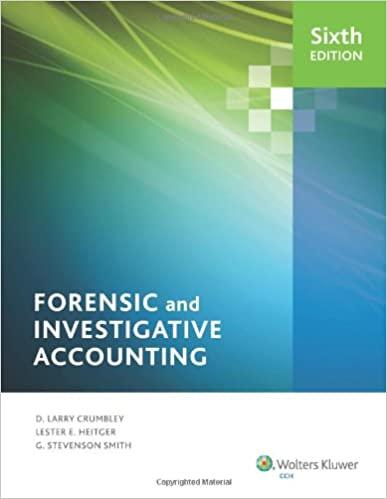Question
Lam, a public accountant, is auditing the financial statements of his client, Harvesters Ltd., a company that sells and distributes agricultural equipment across Canada. Lam
Lam, a public accountant, is auditing the financial statements of his client, Harvesters Ltd., a company that sells and distributes agricultural equipment across Canada. Lam has performed a preliminary evaluation of the company's internal control over sales transactions and has concluded that the quality of system design is very good. The system was developed for the client and installed by a well-respected consulting firm, and the system relies heavily on automated information systems. Lam decides that performing tests of controls using Audit Data Analytics (ADAs) would likely be cost-effective. In addition, after completing his assessment of control risk over revenue transactions, Lam plans to use monetary unit sampling to verify the client's recorded accounts receivable at year-end. In planning the engagement, Lam has assessed materiality to be $175,000.

Step by Step Solution
There are 3 Steps involved in it
Step: 1

Get Instant Access to Expert-Tailored Solutions
See step-by-step solutions with expert insights and AI powered tools for academic success
Step: 2

Step: 3

Ace Your Homework with AI
Get the answers you need in no time with our AI-driven, step-by-step assistance
Get Started


